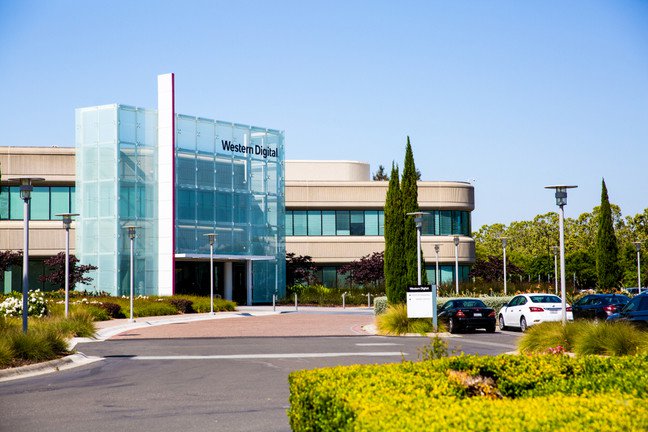Western Digital saw a 26 percent revenue drop in its latest earnings report compared to last year – which was better than Seagate’s 35 percent fall and with no layoffs signalled.
Its revenues were $3.74 billion in the quarter ended September 30, with profit down a whopping 96 percent from the year-ago $6100 million to $27 million. It made $2 billion from selling disk drives, down 21 percent annually, and $1.7 billion from punting SSDs, down 31 percent.

CEO David Goeckeler’s statement said: “I am pleased to see the Western Digital team work together to deliver revenue at the upper half of the guidance range and operating income at the upper half as implied by the midpoints of our guidance, in the midst of an incredibly dynamic and challenging macroeconomic environment.” In his view it’s a consumer-led downturn and there are signs of stabilization.
Financial summary
- Gross margin – 26.3 percent compared to year-ago 33 percent
- EPS – $0.08, 96 percent down from last year’s $1.93
- Operating cash flow – $6 million, down 92 percent from $521 million a year ago
- Free cash flow – $215 million compared to $224 million last year
- Cash and cash equivalents – $2 billion
Its three business segment results were:
- Cloud – $1.83 billion, down 18 percent annually and 49 percent of total revenue (44 percent a year ago)
- Client – $1.23 billion, down 34 percent and 33 percent of total revenue
- Consumer – $678 million, down 30 percent and just 18 percent of total revenue
Cloud customers bought less than a year ago, but both business and consumer customers bought fewer client device drives. Plus consumers bought fewer drives anyway.
WD shipped 14.7 million disk drives – 39 percent fewer than a year ago. The average selling price per disk rose to $125 from $102 a year ago, reflecting higher capacity per drive. Shingled magnetic recording drives exceeded 25 percent of total capacity shipped, which is three months ahead of WD’s expectations.
Wells Fargo analyst Aaron Rakers said WD outperformed Seagate in nearline disk drive shipments, saying WD shipped ~112EB of nearline capacity, up ~3 percent annually, which compares to Seagate’s 20 percent year-on-year drop to ~85EB.
Flash bit shipments exceeded WD’s forecast but were down, Rakers estimates, 7 percent annually to about 21EB.
The company is reducing its gross capex to around $2.7 billion – lower than the previous guidance of about $3.2 billion. Rakers said: “This reflects a ~30 percent reduction for NAND capex, and a ~10–15 percent reduction for HDD.” WD is delaying its BiCS6 (162-layer 3D NAND) transition due to the lowered capex, and sees a possible jump over it direct to BiCS 7 (212-layer) if market conditions permit.
Analysts were told WD’s retail and channel flash demand is leveling out, and orders from PC customers (cSSDs) are stabilizing.
WD says it is deep into the process of qualifying its latest generation hard drives, including 26-terabyte UltraSMR drives, at multiple US cloud and OEM customers.
WD’s outlook for the next quarter is for revenues between $2.9 billion and $3.1 billion. At the $3 billion mid-point that means a 38 percent decline from a year ago. Things are about to get worse – and that could lead to layoffs.








